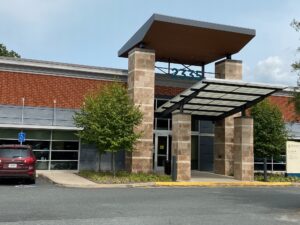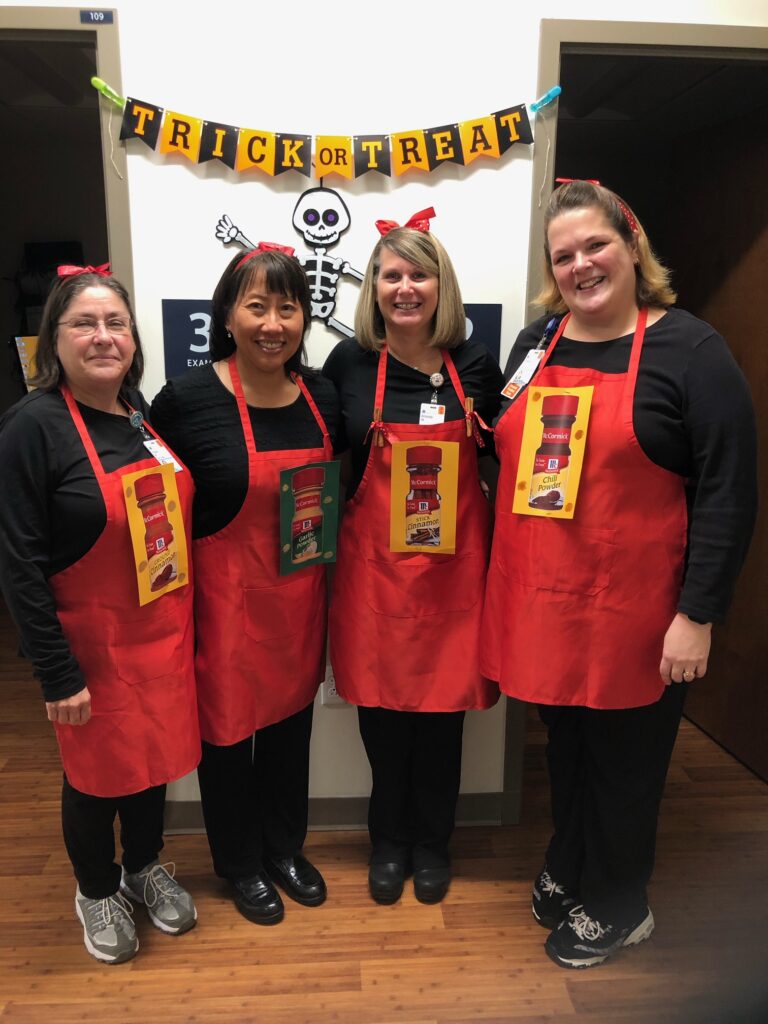
UVA Pediatric Sleep Disorders Clinic
By Dr. Pearl Yu, Pediatric Sleep Disorders Program Director
Q: Tell me about this program.
A: The purpose of this program is to provide optimal sleep care to pediatric patients. There is much thought that goes into how to provide the optimal sleep care including whether it is better for the patient to get the sleep study done first and fast or to have a clinic evaluation first (which takes longer). Every referral sent to our program is reviewed in detail by my team and, ultimately, by me who signs all the orders.
I started in 2003 and took over the program after the Pediatric Directorship position was left vacant for 1 year. The numbers went down quite a bit during the year the position was left vacant. When I came in 2003, I restarted the program.
In 2012, I went to UPG to further develop the pediatric sleep program, fully focusing on building the outpatient practice and how to best optimize the care of these patients.
In 2019, I came back part time to the Division/Department to help with inpatient care. I rather missed caring for inpatients. In addition to caring for inpatients, I had a goal of exposing the residents to more teaching on pediatric sleep issues.
I see patients in clinic 4 days per week including a satellite clinic, both for pediatric sleep and pediatric pulmonary issues. I see about 900 outpatients and complete approximately 760 sleep studies per year.
We are a team of 4 and I am proud of every member of my team. There are 2 Team Care Specialists (Rebecca Dodson and Susan Morris) who I have trained and 1 Referral Coordinator (Amanda Woodward). Rebecca and Susan help to review the referrals, assist with intakes for each patient, and serve as scribes during the clinic visit. This allows me to spend less time in front of the computer during the visit and more time face-to-face with the patient and parent(s). Before they joined the team, I was doing all of this by myself. Rebecca and Susan are also excellent nurses and help care for patients outside of clinic. Amanda has been a critical part of my team since I started with UPG in 2012. Amanda has helped me to evolve my practice into what it is today. She helps to process referrals, facilitate lines of communication with referring providers & parents, and greatly assists the team by wearing many different hats to help us take excellent care of the patients.
We are focused on making the process as simple for the family as possible. If I’ve met the family in clinic and their child will need an ENT provider due to a positive sleep study for sleep apnea, I’ll ask the parent who they’d like to see and whether they would like a referral to an ENT surgeon at UVA or a non-UVA ENT surgeon they know and trust. If their child has moderate-to-severe issues, I strongly recommend UVA because we have an excellent Pediatric Intensive Care Unit. If their issue is mild, I am open to the family choosing a local provider since many of my patients travel great distances. Some of these families come from 6 to 18 hours (or more) away, so finding the right solution is key.
Since the wait time for a clinic visit is longer than I would like, if the clinical question is simple, I may directly refer them to a sleep study. It takes 2 weeks to get a sleep study, but may take several months for a clinic evaluation. If the sleep study is positive and the treatment is straightforward (for example, the patient needs an adenotonsillectomy), the results are sent back to the referring provider with a request to share the results with the family and refer the patient to an ENT surgeon. If the child needs CPAP (continuous positive airway pressure) therapy because they have already had an adenotonsillectomy or the tonsils are small, I will get the child into clinic to review the results and prepare the child/family for CPAP therapy. Their wait time after a positive study is not as long and they end up receiving the care quicker. If the sleep study is normal, the family does not need a clinic visit unless the parent or referring provider specifically requests the clinic visit after the normal study. If this is the case, we can expedite the clinic appointment.
My initial sleep visits are typically 1 to 1.5 hours long (or longer). I often see other issues like anxiety and depression, which contribute to sleep issues. A child with snoring and large tonsils with no other sleep issues is relatively simple, but there are many other issues such as trauma, broken homes, medical/surgical complications, PTSD, poor sleep hygiene, insufficient sleep, limit setting issues, etc., that need to be addressed for sleep to improve.
Q: What goes on in a sleep study?
A: If the patient is under 13 years of age, they come to the Sleep Lab (located across from the Battle Building at 1222 JPA) at 7:30 pm. If they are 13 or older, they can come at 8:30 pm. The patient is hooked up to monitoring equipment on their head, face, chest, belly, and finger. Then they go to sleep! We monitor them all night, looking at the different stages of sleep, evaluating for sleep-disordered breathing, hypoxemia, and/or hypercapnia. We also watch for limb movements if clinically indicated.
The patients are awakened at about 6:30 am, unless there is a clock issue (and if so, patients are allowed to sleep in and wake up on their own) and complete the study. If there is concern of delayed sleep phase syndrome, the patient is allowed to wake up on their own to assess the spontaneous wake-up time given the optimal sleep hygiene conditions in the sleep lab.
If we suspect narcolepsy, we keep them the next day for nap testing (called a multiple sleep latency test or MSLT). They take 4-5 naps (depending on when they woke up) through the day and are given 20 minutes to fall asleep in a dark room. If patient actually fall asleep within the 20 minutes, s/he is allowed another 15 minutes to see if s/he goes into REM sleep. The diagnosis of narcolepsy is made with 2 or more sleep-onset REM periods during the MSLT and a mean sleep latency less than 8 minutes.
Q: What makes this program stand out?
A: We provide sleep care for children/adolescents only and there are not many sleep programs that do this. In general, sleep programs care for all ages with pediatrics/adolescents being a small component of the practice. Here at UVA in the Pediatric Sleep Disorders program, 100% of our patients are children and/or adolescents and we span the range from birth to age 21 (and sometimes older if chronic pediatric medical issues are involved). We also provide care for simple to complex pediatric sleep issues.
Q: For you, what is the most exciting part of your work?
A: The most exciting part of my job is helping people improve their sleep thereby improving their quality of life. In my line of work, improving sleep for the infant or child can also improve sleep for the parents/caretakers and sometimes, the entire family. For instance, by teaching the child or adolescent what optimal sleep hygiene or sleep habits are, there is indirect teaching that is done in the clinic room, which can positively affect other members of the household who may have poor sleep. It is gratifying to have patients/parents return and thank me for the advice of ways to optimize sleep hygiene, or improving their sleep after CPAP therapy was initiated to treat their obstructive sleep apnea that was discovered by sleep study.
Q: Any favorite/memorable patient stories to share?
A: One of my favorite stories to share is a 15-year-old diagnosed with dangerous sleepwalking after numerous studies at non-UVA centers. During one of his episodes, he broke out through his bedroom window, ran across 8 lanes of traffic and woke up at a gas station with blood on his feet. After a full work-up that ruled out sleep apnea, narcolepsy, and PLMD, I treated him with medication and the sleepwalking episodes never returned. His mom had gained 60 lbs during the time this occurred when doctors were not able to give her a diagnosis. She had an expensive/elaborate alarm system installed to catch him when he would have these episodes. After he started the medication, his mom lost the 60 lbs and they were able to get rid of the alarm system. They were very grateful and the outcome was great.
I also had a 12-year-old sleep patient I was seeing for a follow-up and he reported he was sleeping much better with the TV out of the bedroom. He was thankful. I usually do not have grateful 12-year-old patients, but this particular patient was happy that he was waking up more refreshed in the morning. I was caught off-guard by his expression of gratitude but it certainly made my day.
Q: What have you learned that you’d want to share with others in the department?
A: This program has evolved tremendously since I started in 2003 and we are working to grow further. Our focus is optimal patient care and communication with referring providers as well as PCPs. I’m very proud of our program. We go the extra mile for our patients. We get referrals from all over the state, as well as neighboring states, and work to nurture these referral sources. We also work to collaborate with other subspecialists in and outside of UVA to deliver the best care for the patient.
Q: Who should be referred to the program? How can someone learn more, get in touch, schedule, etc.?
A: Any patient for which there is concern of sleep-disordered breathing (such as sleep apnea), narcolepsy, hypersomnia, insomnia, poor sleep.
We recently launched the Pediatric Sleep e-Consult program. The goal of this program is to expedite care for the patient. In the first 30 days, we completed 25 eConsults. The benefit to everyone is that the eConsult is tracked in the patient’s medical record. I’ve worked with Dr. Bryan Thorne to create templates, such as insomnia, poor sleep hygiene, and sleep apnea.
This program helps the primary care provider to address the patient’s sleep issue quicker with my help and input, and hopefully avoid the long wait for a clinic visit (typically 3-4 months), or at least give the families some treatment options while waiting for the clinic appointment and/or sleep study. Basic sleep information (keeping the room dark, cool, quiet, with no television or light emitting electronics) can be shared with parents faster than having to wait to hear me say this to them in clinic, or possibly optimization of psychiatric therapy may need to be considered prior to a full sleep evaluation.
Providers, please note that you will now enter ECON36 as the procedure code in Epic. We are phasing out the REF151 code. The name of the ECON36 order is “Amb Consult Pediatric Sleep Medicine (includes sleep study)”. Once the order is submitted, the referral will be reviewed and the completed consult will be returned to you to review. If the patient is eligible for a sleep study only, the appropriate sleep study order will be routed to you (the referring provider) for review and signature. The pended sleep study order will come to your CC’d Charts inbox to sign.
Q: Anything else you’d like to add?
A: Sleep problems in the child/adolescent can affect the entire family. We work to address what we can and then help guide the patient to appropriate providers if non-sleep issues are negatively impacting the sleep. I am very proud of my outstanding team. We are here to help.

My wonderful team (Halloween 2019 before the pandemic!)
Filed Under: Features
